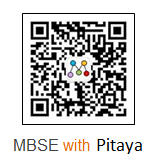|
1. What is MARTE
MARTE (Modelling and Analysis
of Real-Time Embedded Systems) is a modeling extension
of UML for real-time and embedded systems. Support
the entire process of model-based real-time and embedded
system development: requirements definition - >
design - > implementation - > validation and
verification. MARTE describes the software of real-time
embedded systems and the hardware they run on, with
a particular focus on modeling performance and timing
scheduling.
Benefits you can get with MARTE£∫
Provides a common modeling
approach for the hardware and software aspects of
real-time embedded system development to improve
communication between developers.
Support interoperability
between tools for requirements, design, validation,
code generation, and more.
It is possible to build
a model that takes into account both hardware and
software characteristics, and the model can be used
to quantitatively predict the real-time and embedded
characteristics of the system.
MARTE focuses on modeling in 2
directions:
Real-time and embedded
systems
Tags for the analysis
of system properties
Tags for the Analysis of Aystem
Properties
The following is an illustration
of the contents of the MARTE specification:
Diagram of
MARTE's architecture
The base package consists of (both
the design model and the analytical model use some
basic concepts, which are put into the base package):
Core Elements
NFP, non-functional attributes
Time, enhanced time modeling
GRM, General Resource
Modeling
GCM, Common Component
Model
Alloc, Assignment Modeling.
The MARTE design model includes
the following packages:
GCM£¨Generic Component
Model
HLAM£¨High-Level Application
Modeling
SRM £¨Software Resource
Modeling
HRM£¨Hardware Resource
Modeling
The MARTE analysis model includes:
GQAM£¨ Generic quantitative
Analysis Modeling
SAM, Schedulability Analysis
Modeling, Temporal Analysis Modeling
PAM £¨Performance Analysis
Modeling
MARTE Add-on Packs:
VSL£¨Value Specification
Language
RSM£¨Repetitive Structure
Modeling
MARTE_Library, the MARTE
library is mainly some basic data types.
MARTE User and Scenarios
The potential users of MARTE are
shown in the figure below:
1.Model Designers: These are modelers
who specialize in designing models for use in the
context of the RT/E system development process. Models
can be used in the usual specification, design, or
implementation phases. But models can also be used
for analysis to determine if they will meet performance
and schedulability needs.
2.RT/E System Architects: They
are specific modelers who focus on the overall architecture,
often making trade-offs between implementing features
in hardware, software, or both.
3.Hardware Modelers: These are
modelers who specialize in the hardware aspects of
RT/E system development.
4. Hardware Architects: They are
the modelers who are responsible for designing the
hardware architecture.
5.Software Modelers: These are
modelers who specialize in the software aspects of
RT/E system development.
6.Software Architects: They are
modelers who care about designing software architectures.
7.Model Analysts: These modelers
are concerned with annotating system models in order
to perform specific analysis methods.
8. Execution Platform Providers:
They are developers and suppliers of runtime technologies
(hardware or software-based platforms), such as real-time
CORBAs, real-time operating systems, and specific
hardware components.
9.Methodology Providers: They
are individuals and teams responsible for defining
a model-based approach for the RT/E domain. This category
includes UML tool providers. It can be further divided
into:
9.1
Design Method Providers: These are specialized method
providers who are responsible for defining a model-based
approach to specifying, designing, or implementing
an RT/E system.
9.2
Analytical Method Providers: These are specialized
method providers who are responsible for defining
model-based analysis methods, such as RMA or queuing
theory, and technology providers, such as tool vendors,
who provide tools and processes that support specific
model analysis methods.
The diagram of the use cases for
these users using MARTE is as follows:
MARTE'S
SPECIFICATION
|
Scenario |
Support
provided by MARTE |
| Software
modeling |
Build
real-time and embedded (RTE) software applications
and model their non-functional attributes. |
| Hardware
modeling |
Build
advanced hardware modeling of real-time and embedded
(RTE) systems, including their NFPs. |
| System
architecture design |
Includes
the previously mentioned applicable scenarios
for software modeling and hardware modeling, as
well as the assigned expansion units. |
| Performance
analysis |
It
includes the expansion units needed to address
real-time and embedded system (RTES) performance
evaluation. |
| Scheduling
analysis |
It
includes the expansion units needed to address
real-time and embedded systems (RTES) schedulability
analysis. |
| Infrastructure
providers |
It
includes the extension units necessary to address
the definition and/or use of platform-specific
services, such as operating system services. This
can be used to create a library of RTOS service
models, as well as to specify the services required
by the platform to support higher-level RT design
approaches. |
| Methodologist |
Tools
that are in line with the current use case should
support all the extension units required for other
use cases, which in practice means supporting
all the necessary features of MARTE. |
The following table lists the
expansion units that need to be supported for each
applicable scenario of MARTE
I hope you have benefited from
reading this. If you are willing to share your experience,
please submit it to us.

If you want to learn more about
MARTE, you can refer to the following materials.
ARTICLE£∫MAPPING
MARTE UML PROFILES TO AADL
Facts£∫MARTEL
If you would like to learn more:
Welcome to the Modelers Channel
http://www.mbse-x.com/
Also welcome to contact us
directly at umlooo@hotmail.com

|
